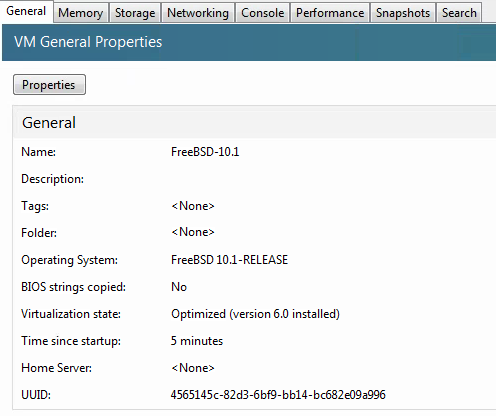

Knowing the device ID doesn’t help you actually establish a connection to that device or get a list of files, etc.įor a connection to be established, both devices need to know about the other’s device ID. Given a device ID it’s possible to find the IP address for that device, if global discovery is enabled on it.
#Nas4free syncthing code#
There are no plans by the current Syncthing team to support iOS in the foreseeable future, as the code required to do so would be quite different from what Syncthing is today. There is an alternative implementation of Syncthing (using the same network protocol) called fsync(). Resilio Sync uses an undocumented, closed protocol with unknown security properties.

Syncthing uses an open and documented protocol, and likewise the security mechanisms in use are well defined and visible in the source code. Syncthing is an open source file synchronization tool.
#Nas4free syncthing windows#
Syncthing and BitTorrent/Resilio Sync accomplish some of the same things, namely syncing files between two or more computers.īitTorrent Sync, now called Resilio Sync, is a proprietary peer-to-peer file synchronization tool available for Windows, Mac, Linux, Android, iOS, Windows Phone, Amazon Kindle Fire and BSD. How does Syncthing differ from BitTorrent/Resilio Sync? They are automatically removed whenever a file transfer has been completed or after the configured amount of time which is set in the configuration file (24 hours by default). Temporary files are used to store partial data downloaded from other devices. Additionally, appending data to existing large files should be handled efficiently as well. This means that renaming a large file will not cause a retransmission of that file. Syncthing handles renaming files and updating their metadata in an efficient manner. The more devices you have online, the faster an additional device will receive the data because small blocks will be fetched from all devices in parallel.
#Nas4free syncthing torrent#
Therefore, multiple devices can share the synchronization load, in a similar way to the torrent protocol. Syncthing segments files into pieces, called blocks, to transfer data from one device to another.

Windows, POSIX or NFS ACLs (not preserved).Extended attributes, resource forks (not preserved).Hard links and Windows directory junctions (followed, not preserved).Directory modification times (not preserved).File or directory owners and Groups (not preserved).Symbolic links (synced, except on Windows, but never followed).File permissions (when supported by file system on Windows only the read only bit is synchronized).The following may be synchronized or not, depending: The following things are always synchronized: It’s definitely not SyncThing, even though the abbreviation st is used in some circumstances and file names. It’s Syncthing, although the command and source repository is spelled syncthing so it may be referred to in that way as well. Is it “syncthing”, “Syncthing” or “SyncThing”? Therefore Syncthing does not upload your data to the cloud but exchanges your data across your machines as soon as they are online at the same time. We believe your data is your data alone and you deserve to choose where it is stored. This means the creation, modification or deletion of files on one machine will automatically be replicated to your other devices. Syncthing is an application that lets you synchronize your files across multiple devices. Syncthing-faq - Frequently Asked Questions How do I increase the inotify limit to get my filesystem watcher to work?.How do I run Syncthing as a daemon process on Linux?.How do I access the web GUI from another computer?.How can I exclude files with brackets () in the name?.Is Syncthing my ideal backup application?.When I do have two distinct Syncthing-managed folders on two hosts, how does Syncthing handle moving files between them?.Does Syncthing support syncing between folders on the same system?.How do I configure multiple users on a single machine?.Am I able to nest shared folders in Syncthing?.How do I serve a folder from a read only filesystem?.Why does Syncthing connect to this unknown/suspicious address?.Does the audit log contain every change?.Why do I see Syncthing twice in task manager?.Why do I get “Host check error” in the GUI/API?.Why is the setup more complicated than BitTorrent/Resilio Sync?.How does Syncthing differ from BitTorrent/Resilio Sync?.Is it “syncthing”, “Syncthing” or “SyncThing”?.


 0 kommentar(er)
0 kommentar(er)
